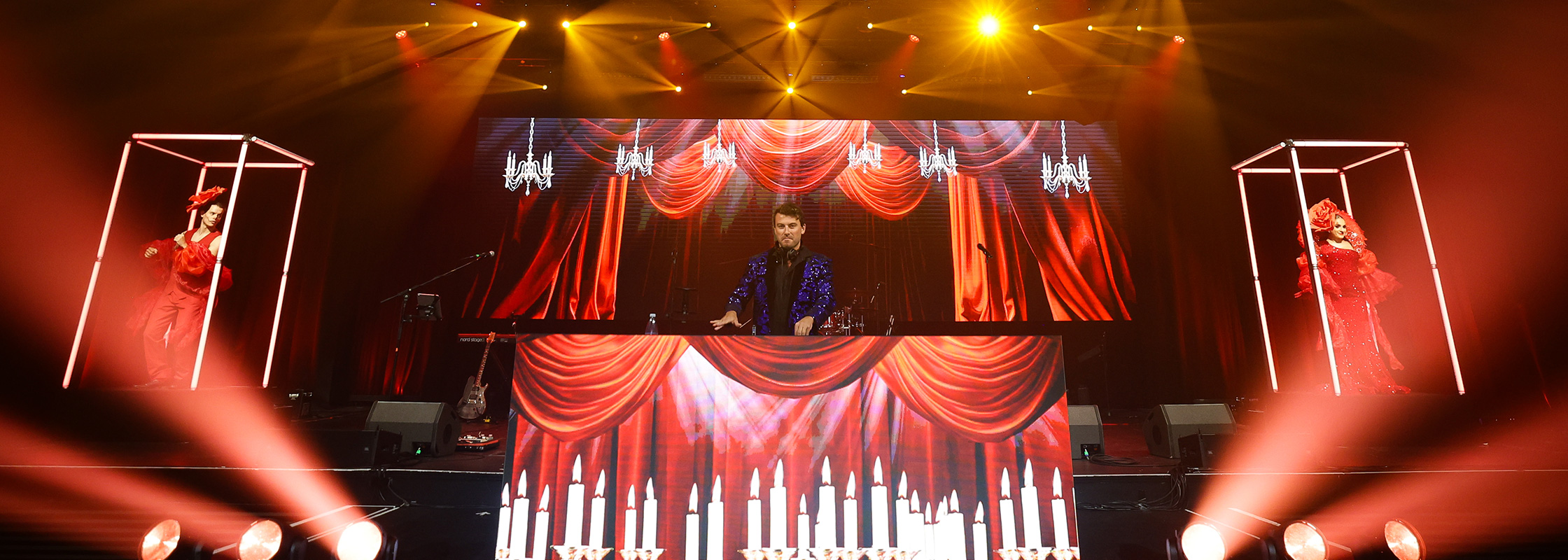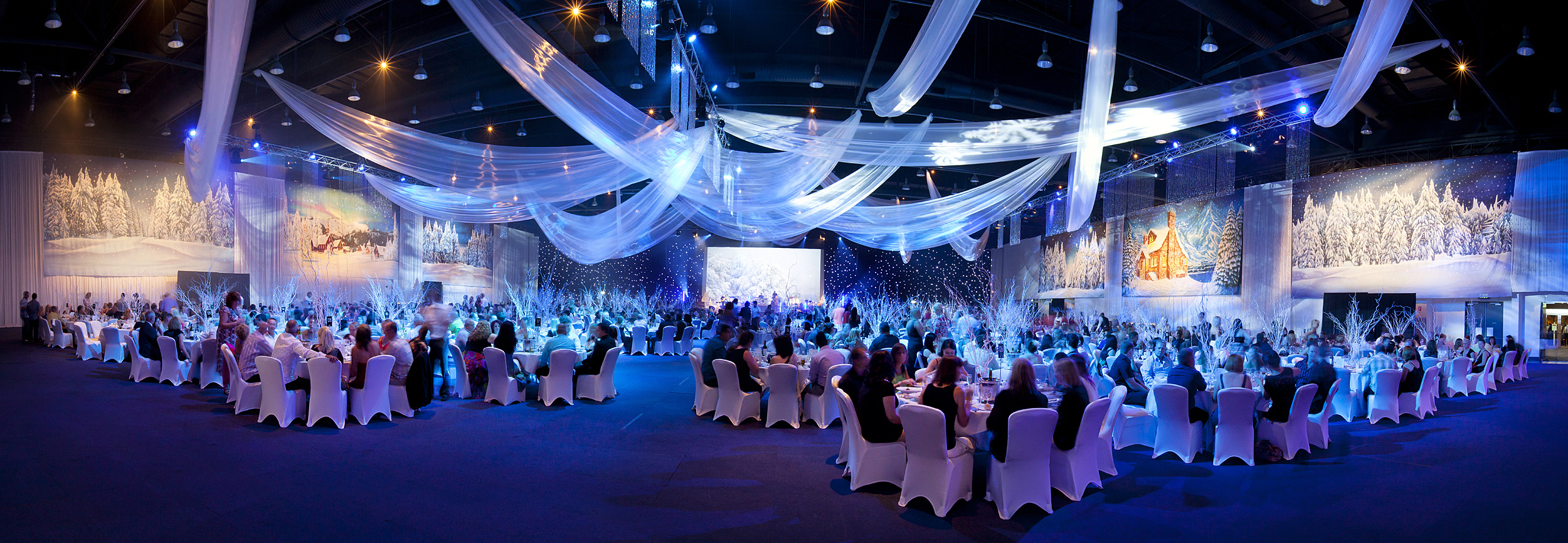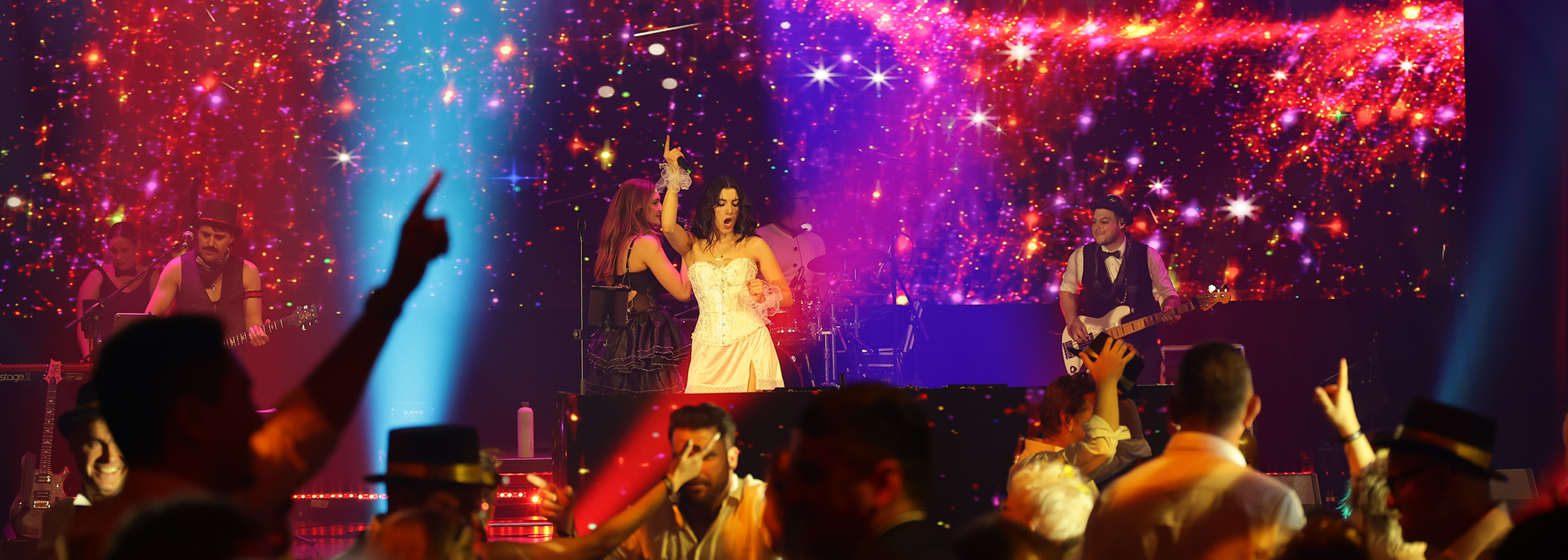The primacy and importance of sound in everyday life is obvious to everyone, yet the process of creating an aural presence at an event with excellent results is not widely understood outside of technical circles. Sound, both ephemeral and invisible, does not emit from as ethereal sources. The equipment is often ungainly and the event industry goes to great lengths to make its provisions as visibly unobtrusive as possible, leading to the common misconception that sound equipment is not a major component of an event. It may not have the visual spectacular presence of a huge projection screen or complicated lighting show but there is a lot going on that cannot be seen – but is definitely heard.
Getting Your Message Heard

The Ins
For the voice of your speaker to be relayed clearly a number of things have to fall in place:
- You must use the correct microphone in the right position
- The presenter must use the microphone appropriately
- Adjustments need to be made to the signal to compensate for issues inherent in the speakers voice
- You must adjust to any complications in the room’s acoustics
And Outs
The signal from the speaker then needs to push out of the loudspeakers at the right volume past your audiences ears. This involves amplification, sending the signal to the right number, size and type of loudspeaker.
Obtrusive Visually
The balance between acoustic performance, intelligibility and a visually acceptable solution is a delicate compromise. Loudspeaker design and development over many decades has improved their power and aesthetics, but they are still considered an eyesore. Unfortunately the ears are positioned very close to the eyes. Negotiating the ideal blend of practicality and performance takes a skilled and experienced designer.
Choosing the Right Music For Your Event
Almost everyone has a soundtrack to their lives; the love song that represents a relationship, the album that captured a summer or the music that helps you through a hard time. The correct music choice at an event sets a mood, creates excitement and can be used to create associations between your product or service and a cultural value. Different styles of music can require different types of loudspeakers and amplification. For example, a high-energy sales conference will mostly use up-tempo inspirational music and use volume as a means to animate the crowd. This will require more power and more coverage, quite simply because you need to move more air at a higher energy level.
Equipment You will Need
No matter how expensive they are all, all loudspeakers and microphones are imperfect replicators of the original sounds they are trying to distribute or convert. You will need to supplement these with extra equipment.
Subwoofers

One of the biggest physical limitations in any loudspeaker is its ability to reproduce the entirety of the frequency range audible to humans at the same time. When the frequencies get down to the ‘extended low end frequencies’ created by bass instruments and most synthesizer music (‘doof doof’ techno) they’re physically impossible for a normal low-end driver in a loudspeaker to recreate. Specialised loudspeakers, ‘subwoofers’ or sub-speakers, are dedicated to reproducing frequencies from around 120Hz to 20Hz, which is the bottom of the human hearing range.
These extended low-end frequencies are very important to human understanding of music. We have a very visceral reaction to low end audio, because we feel it more than hear it. Think about adventure films and dance music – the bass delivers the adrenaline. At your next event ask the sound technician to turn off the subwoofers during a rehearsal of your musical cue. You will most certainty hear and feel the difference.
Microphones
Microphones perform the opposite function to loudspeakers – they take movements in the air and convert them into electrical signals. There are dozens of designs and types that each perform a specific function and most will do a poor job when used on a source they are not designed for. You will probably be surprised by how many microphones are dedicated to just the drum kit in a jazz ensemble. As each individual drum or cymbal has different frequency, volume and tonal characteristics, each needs its own microphone. Eight to twelve yields the best results.
Getting the Best Sound from Your Performers

Choosing the right equipment, setting it up and operating it correctly are the benchmarks of performance for any sound operator, but it does not guarantee you will have perfect sound. The best sound operator in the world cannot make a bad band sound good! Luckily individual speakers are easier to converse with and adjust.
Scared Speakers
Some speakers are afraid of the microphone and will stand too far away from it. Even a great sound technician will not be able to generate enough volume for them to be heard. A quick conversation between presenter and sound technician should remedy this.
Active Speakers
Similarly some presenters are very energetic and are constantly moving around a static microphone. You just need to keep up communication with the presenter about the specifics of the microphone they are using. The best way to ensure a quality performance from your speakers is to have a speakers prep.
Making Sure Your Performers Can Hear Themselves

Not just your audience needs to hear your performers but your performers need to hear themselves and each other. The sound mix created for the perfomers is called foldback and can be as simple as a single speaker on the floor of the stage to a complicated map of dozens of separate mixes sent to individual pairs of wireless ear buds.
Usually foldback can be handled by the same mixing desk working with the audience sound, but for large musical and vocal ensembles and events with multiple acts, the best option is to have a separate mixing desk and operator just for the stage sound.
Listen Up
Everyone has a story about bad sound; too loud, plagued by feedback, patchy speakers, too hard to understand what was being said… but how many people talk about an excellent sound experience? Sound technicians often speak of the perfect job as being one where they were not noticed at all. At Encore Event Technologies we pride ourselves on our ability to stand out and be invisible at the same time.
Want to stay up to date with industry trends? Browse our range of downloadable Event Insights papers.




Comments